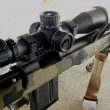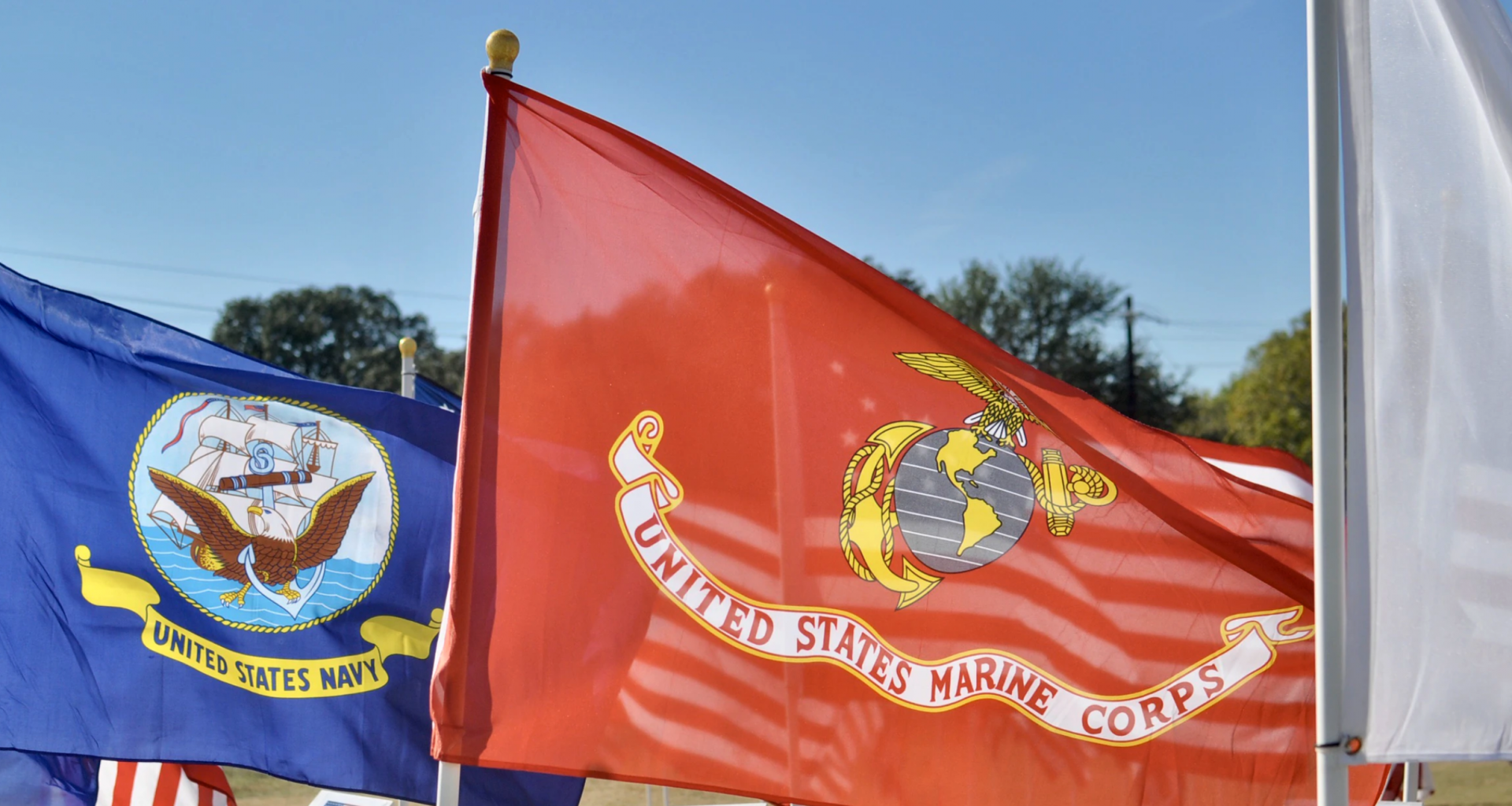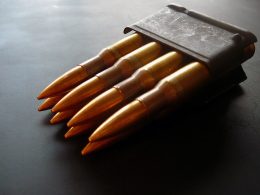As recounted in the classic film Full Metal Jacket
This is my rifle. There are many like it, but this one is mine.
My rifle is my best friend. It is my life. I must master it as I must master my life.
My rifle, without me, is useless. Without my rifle, I am useless. I must fire my rifle true. I must shoot straighter than my enemy who is trying to kill me. I must shoot him before he shoots me. I will . . . .
My rifle and I know that what counts in this war is not the rounds we fire, the noise of our burst, nor the smoke we make. We know that it is the hits that count. We will hit…
My rifle is human, even as I, because it is my life. Thus, I will learn it as a brother. I will learn its weaknesses, its strengths, its parts, its accessories, its sights, and its barrel. I will ever guard it against the ravages of weather and damage. I will keep my rifle clean and ready, even as I am clean and ready. We will become part of each other. We will…
Before God I swear this creed. My rifle and I are the defenders of my country. We are the masters of our enemy. We are the saviors of my life.
So be it, until victory is America’s and there is no enemy, but Peace!
BONUS OFFER: Get your free shooting range targets to print at home!
Get your free targets to print at home!
US Marine Creed
The United States Marine Corps (USMC), also known as the United States Marines was founded in November 1775. It’s one of the eight uniformed services of the USA Armed Forces and works closely with the US Navy.
The Creed of the United States Marines (also known as the Rifleman’s Creed) was written by Major General William H. Rupertus in 1942 and became part of basic United States Marine Corps doctrine. In the past all Marines had to memorize the Rifleman’s Creed, while recent years, it’s been published in the Marines’ standard recruit training guide and learning it by heart is no longer the requirement it used to be. There have been different adaptions of the Rifleman’s Creed that surfaced over the years but versions closest to the original are more accepted.
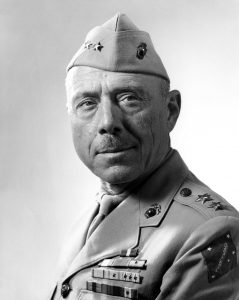
It was after Pearl Harbor when Rupertus, who was the Commanding General of Marine Corps Base San Diego, felt the Marines needed to understand that the only weapon that stood between them and death was their rifle. He wanted a doctrine that was profound and said with conviction, so they never had to be reminded or preached about it.
A hardened and old-fashioned soldier
William Rupertus was a hardened and old-fashioned soldier who entered the Marine Corps in 1913. He served in both World War I and World War II. In December 1944, he was placed in command of the Marine Corps School at Quantico, Virginia but died four months later on the 25 March 1945 after having a heart attack. His legacy lives on as the author of the famed and respected, Marine Rifleman’s Creed.
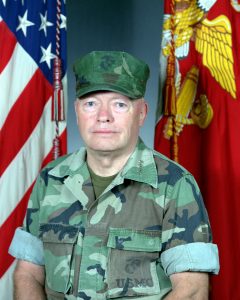
General Alfred M. Gray Junior was the Marine Corps 29th Commandant who famously stated, ”Every Marine is, first and foremost, a rifleman. All other conditions are secondary.” However, it takes more than simply being a skilled shooter to be a Marine. If a Marine doesn’t understand all aspects and fundamentals of what’s required, they can become a liability on patrol.
A Rifleman’s Duty and Responsibility
A rifleman needs to know all possible angles of a mission such as knowing the best entry method to a two-story building, knowing the dimensions of a fighting hole and reasons behind it; there are many variables that makes the job of a Marine complicated, so full mental agility is as important as physical and shooting ability.
Every Marine, whether they are a food specialist or logistics personnel, are trained in rifle basics. The Marine Corps was entirely built on training and supporting Infantry Rifleman. Marines need to be able to pick up any weapon and defend themselves and their fellow Marines, which is the essence of the quote, ”Every Marine is a Rifleman”.
Riflemen are trained in using the M4 service rifle, M203 grenade launcher, M249 squad automatic weapon, and M72 Light Anti-Tank Weapon rockets. They learn to be primary scouts and assault troops. Riflemen are the foundation of the Marine infantry.
Ready to Assist in Humanitarian and Disaster Missions
Marines are expected to not only fight in traditional warfare but to aid and assist in humanitarian and disaster missions. Having this fighting yet supportive spirit is a requirement beyond the scope of military service. What distinguishes Marines is not just rigorous training, high-performance equipment or tactics, it’s a primal and fighting spirit that becomes a calling.
Defend, Fight and Win on Land, Sea and Air
The Marines are deployed to defend, fight and win battles swiftly and aggressively on land, sea and air. Being multi-disciplined, the unique traits, capabilities and leadership qualities are what makes a man or woman, a dedicated and resilient Marine.
As the saying goes, you don’t join the Marines, you become one. The Marine Corps defends the country and people of America on home soil and abroad. Becoming a Marine, you are trained to improvise, adapt and surmount all obstacles in all situations, while maintaining an eagerness and the determination to engage and defeat the enemy.
New Recruits
New recruits are trained at Parris Island, South Carolina, or at the Recruit Training Depot at San Diego, California. Parris Island is the only training camp for women. Marines will learn the Marine Rifle Creed, the Marine’s Hymn, the USMC Core Values, Marine Corps history, and Code of Conduct. Training is broken down into Basic Learning, which is the physical and mental stage, second is Rifle Training, and the third phase is Field Training.
Becoming a Marine Is Not Easy
Becoming a Marine is not an easy, fun journey. Training for new recruits teaches them how to battle external forces as well internal forces that test the mental and physical limits. It is those who have the authentic fighting spirit that are able to overcome all challenges like chaos, doubt, fear and exhaustion. Marine training separates those who can rise above the suffering and those who are consumed by it.
While new Marines undergo 13 weeks of training, their development never stops. They are continuously trained on equipment, weapons, vehicles and aircraft to stay ahead and refine their skills.
Core Ethos of All Marines: Respect and Leadership
The US Marine Infantry comprises ground forces to locate and eliminate hostile forces and are amphibious soldiers who are versatile and effective in tumultuous conditions. They are trained in a range weapons and systems like communications, artillery, naval gunfire, and close combat on land or at sea. The ethos in the Marines is that of respect and leadership that’s developed in every person who enlists.
Through on-going training, Marines can specialize in different military occupations:
- 0311: Rifleman
- 0312: Riverine Assault Craft
- 0313: LAV Crewman
- 0314: Rigid Raiding Craft
- 0316: Combat Rubber Reconnaissance Craft
- 0317: Scout Sniper
- 0321: Reconnaissance Man
- 0323: Reconnaissance Man, Parachute Qualified
- 0324: Reconnaissance Man, Combatant Diver Qualified
- 0326: Reconnaissance Man, Parachute, and Combatant Diver Qualified
- 0331: Machine Gunner
- 0341: Mortarman
- 0351: Infantry Assaultman
- 0352: Anti-tank Missileman
- 0369: Infantry Unit Leader
- 0372: Marine Special Operations Command (MarSOC) Critical Skills Operator (CSO)
Not every Marine can automatically specialize as each occupation requires different physical fitness, mental dexterity, and tactical skills that are assessed throughout boot camp, advanced training, and selection processes.
Semper Fidelis
While the motto of the Marine Corps is Semper Fidelis (meaning Always Faithful), it’s the basis of the Rifleman’s Creed that encompasses what it means to think, feel, act and breathe the life of being a true US Marine.


